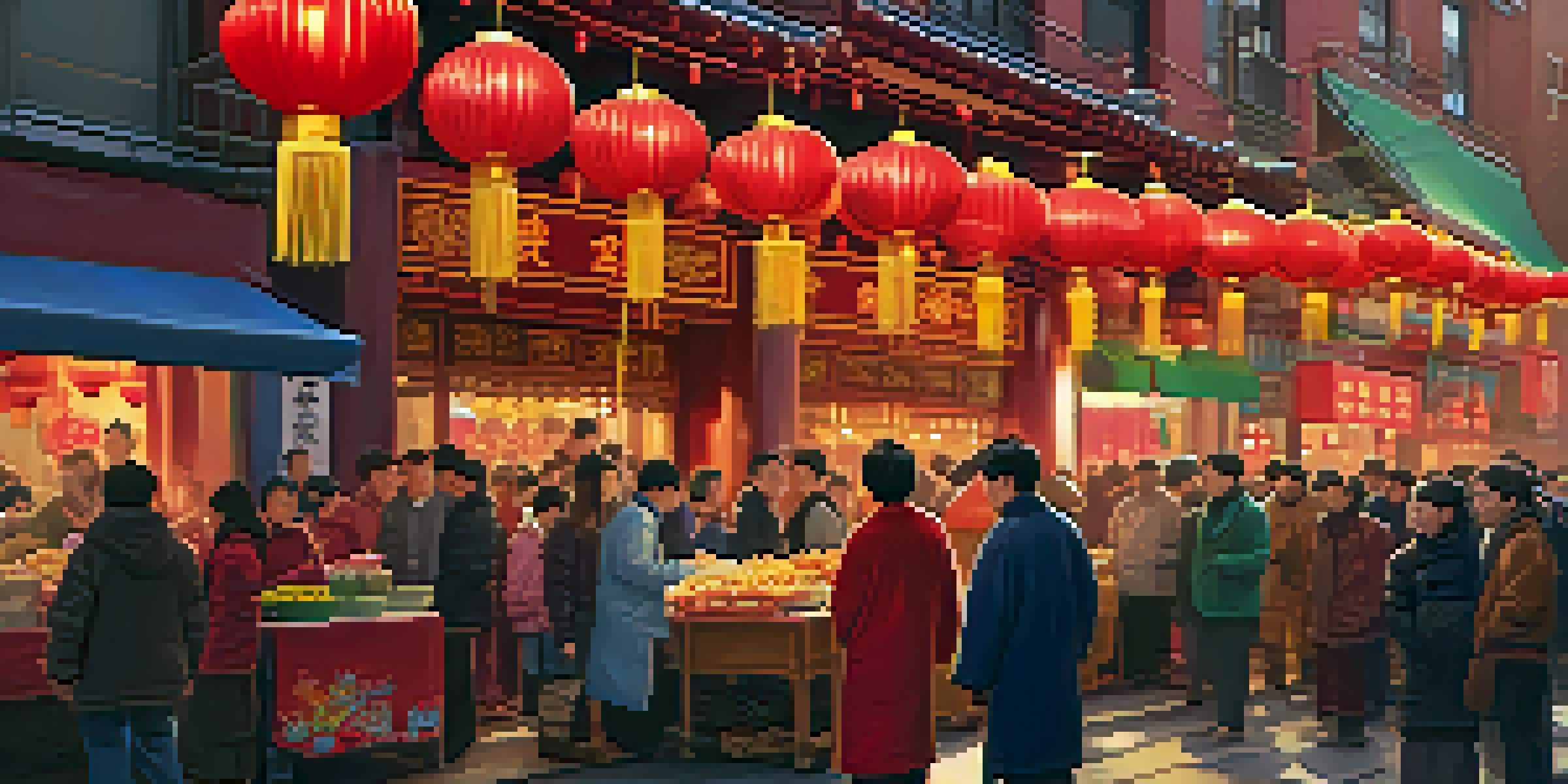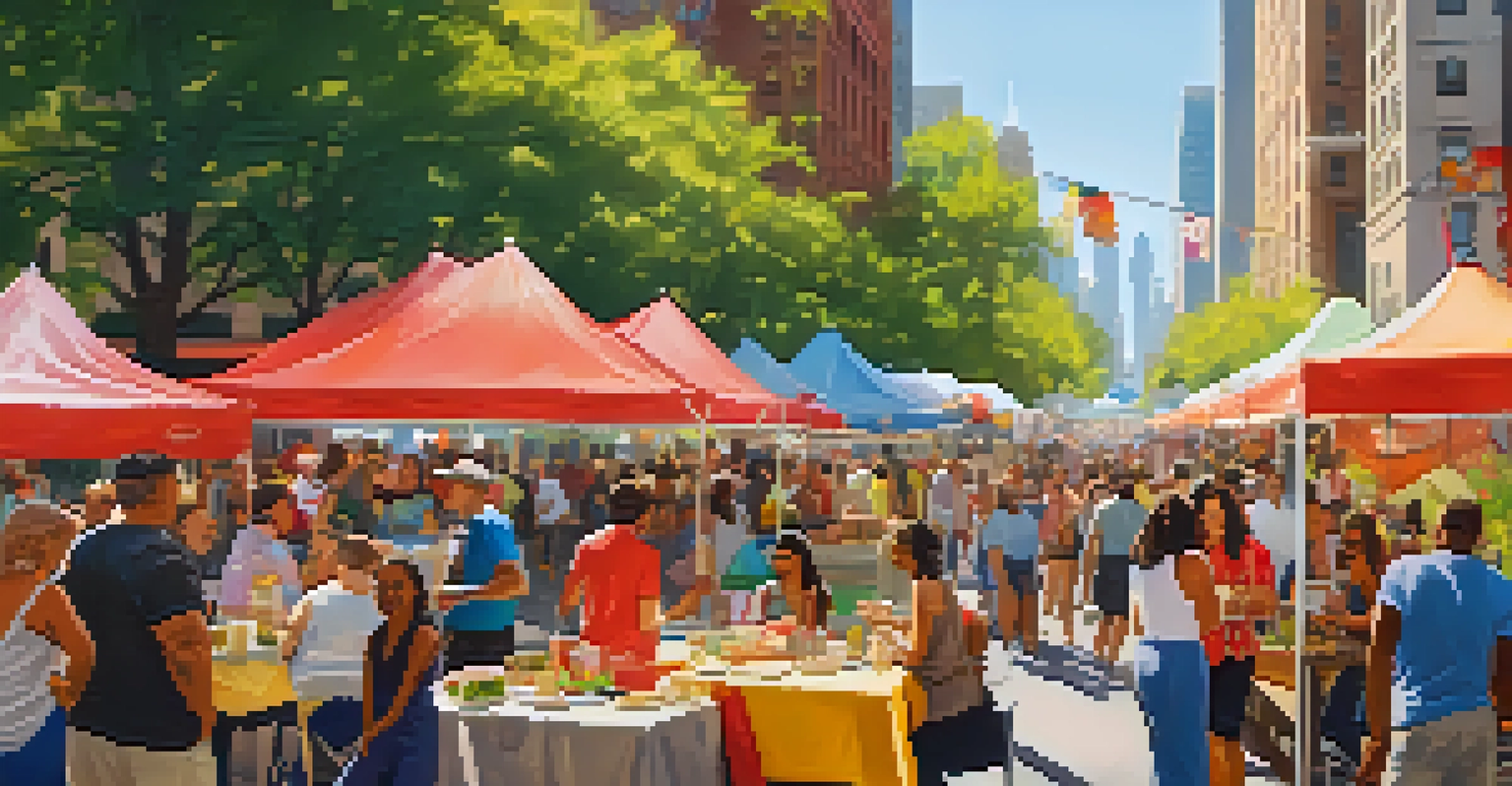The Role of Immigrants in Shaping New York's Culture

A Melting Pot: The Diverse Origins of New York's Immigrants
New York City is often referred to as a 'melting pot', and for good reason. People from all over the world have made this city their home, each bringing unique traditions, languages, and perspectives. From Irish and Italian immigrants in the 19th century to today's influx of Latin American and Asian communities, each group has contributed to the rich tapestry of city life.
New York is a city of immigrants, a place where the diversity of its people is its greatest strength.
This diversity is visible in the neighborhoods, where cultural enclaves thrive. Areas like Chinatown and Little Italy are vibrant reminders of the city's immigrant history, showcasing authentic cuisines, festivals, and even languages. Such neighborhoods not only preserve the heritage of these communities but also invite New Yorkers and tourists alike to experience their culture.
Moreover, this blend of cultures has fostered a spirit of creativity and innovation. The constant interaction between different cultural backgrounds has led to new art forms, culinary trends, and social movements, making New York a global cultural hub.
Culinary Contributions: Food as a Cultural Bridge
One of the most delicious ways immigrants have influenced New York's culture is through food. The city's culinary scene is a testament to this influence, offering everything from street food to gourmet dining. Dishes like bagels, pizza, and dumplings have roots in various immigrant communities, showcasing how food can tell powerful stories.

Restaurants and food trucks across the city serve as cultural ambassadors, introducing New Yorkers to flavors from around the globe. A meal in New York can take you on a culinary journey through Italy, Mexico, or Southeast Asia, giving a taste of each culture's unique heritage. This accessibility allows everyone to appreciate and celebrate cultural diversity through food.
New York's Cultural Melting Pot
The city's diverse immigrant communities enrich its culture through unique traditions, languages, and perspectives.
Additionally, food festivals and markets highlight these culinary contributions, creating spaces where communities can share their traditions. Events like Smorgasburg not only provide a platform for diverse cuisine but also foster connections between different cultural groups, illustrating how food can unite people.
Artistic Expression: Immigrants in New York's Creative Scene
Art has always been a vital form of expression for immigrants, and New York serves as a canvas for their stories. The city is home to countless artists from around the world, each bringing their unique perspective and creativity. From murals in Brooklyn to performances in the theater district, immigrant artists contribute to the vibrant cultural landscape of New York.
In diversity there is beauty and there is strength.
Cultural institutions like the Museum of the City of New York celebrate this artistic heritage by showcasing the works of immigrant artists. These exhibitions reflect the struggles, triumphs, and everyday lives of immigrant communities, allowing audiences to connect with their narratives on a deeper level. Art becomes a medium for empathy and understanding.
Moreover, collaborative art projects and community initiatives often bring together artists from diverse backgrounds. These efforts not only enrich the artistic dialogue in the city but also strengthen community bonds, fostering a sense of belonging and shared identity among New Yorkers.
Music: The Soundtrack of New York's Diverse Communities
Music is another powerful medium through which immigrants have shaped New York’s culture. The city’s soundscape is filled with a variety of genres, from jazz and hip-hop to salsa and reggae, reflecting its diverse population. Each immigrant community has contributed its own musical traditions, creating a dynamic and ever-evolving music scene.
Venues such as the Apollo Theater and various street festivals showcase performances that celebrate this musical diversity. These events not only highlight the talents of immigrant artists but also create spaces for cultural exchange and appreciation among different communities. The rhythms and melodies of New York tell a story of resilience and unity.
Food as a Cultural Connector
Immigrant cuisines in New York serve as a delicious bridge, allowing residents and visitors to experience the rich flavors of various cultures.
Furthermore, the blending of musical styles has led to innovative genres that are uniquely New York. For instance, the fusion of Latin rhythms with hip-hop has given rise to vibrant new sounds that resonate with a broad audience, illustrating how immigrant influences drive artistic evolution.
Festivals and Celebrations: Honoring Cultural Heritage
Festivals play a significant role in celebrating the rich cultural heritage of New York’s immigrant communities. Events like the West Indian Day Parade and the Lunar New Year Festival bring together thousands of participants and spectators to honor their traditions. These celebrations create a sense of pride and belonging while inviting others to join in the festivities.
Such festivals often feature traditional music, dance, food, and art, providing an immersive experience for attendees. They serve as a reminder of the contributions that immigrants have made to the cultural fabric of New York, enriching the city’s identity. Additionally, they foster understanding and appreciation among diverse groups.
Moreover, these events often attract tourists, boosting the local economy and promoting cultural tourism. The vibrant atmosphere and communal spirit of these celebrations make New York a dynamic and inclusive place, where everyone can share in the joy of cultural diversity.
Language: The Multilingual Tapestry of New York
Language is perhaps one of the most visible signs of New York’s immigrant influence. With over 800 languages spoken in the city, New Yorkers encounter a rich tapestry of dialects and accents daily. This linguistic diversity not only reflects the numerous cultures present but also enhances the city’s character and vibrancy.
Street signs in multiple languages and multilingual advertisements are common sights, illustrating how language shapes the urban landscape. These elements foster inclusivity, allowing speakers of different languages to feel at home. It's a reminder that New York is a city built on the contributions of people from all corners of the globe.
Art and Music Reflect Diversity
The vibrant artistic and musical landscape of New York showcases the influence of immigrant communities, fostering creativity and cultural exchange.
Additionally, language exchange programs and community classes promote cultural understanding and connection. These initiatives not only help immigrants learn English but also allow native speakers to learn about other languages and cultures, enriching the shared experience of living in such a diverse city.
Social Movements: Immigrants Advocating for Change
Throughout history, immigrants have played a crucial role in advocating for social change in New York. Their experiences often highlight issues such as workers' rights, immigration reform, and social justice. As diverse communities unite, they amplify their voices, pushing for policies that reflect their needs and aspirations.
Organizations led by immigrant communities work tirelessly to address challenges faced by their members, such as discrimination and economic inequality. They provide crucial resources and support while also engaging in advocacy efforts to influence legislation. This grassroots activism showcases the resilience and determination of immigrant populations.

Moreover, movements like the Fight for $15 campaign have seen significant involvement from immigrant workers, illustrating their impact on broader social issues. By standing together for their rights, immigrants not only improve their own lives but also contribute to a more equitable society for all New Yorkers.